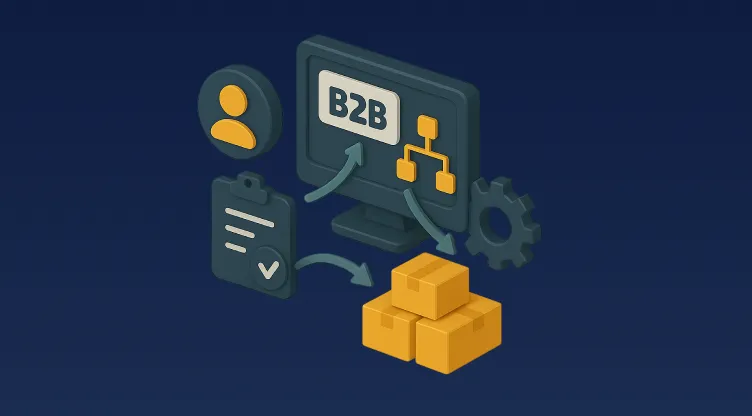Inventory Accounting: Methods, Benefits & Best Practices

Table of Contents
What is Inventory Accounting
Inventory accounting functions as a specialised system for monitoring and evaluating the financial consequences of inventory items, from raw materials to their transition to completed products, using different inventory valuation methods. Inventory accounting acts as an economic backbone to ensure that every product or component moves past shelf life to add value to the balance sheet.
Why Inventory Accounting Isn’t Just Counting Boxes
At its core, inventory accounting assigns monetary value to goods at three critical stages: raw materials, work-in-progress (WIP), and finished products. Maintaining accurate inventory records must meet compliance standards because it goes beyond basic bookkeeping. According to Generally Accepted Accounting Principles (GAAP) any error in reporting inventory amounts results in inflated reported profits or overstated assets.
The Unseen Benefits: More Than Just Compliance
- Margin Optimisation: By dissecting costs at each production stage (e.g., clinical trials for drugs), companies can pinpoint where to trim fat without sacrificing quality.
- Strategic Forecasting: Metrics like inventory turnover ratio reveal how quickly stock converts to cash, guiding purchasing and sales strategies.
- Tax & Audit Readiness: Accurate records prevent midnight panics during tax season or investor due diligence.
Inventory Valuation Methods
Choosing the right method to value your inventory is like picking the right tool for a job. Here are the most common Inventory valuation methods:
- First In, First Out (FIFO): This strategy assumes that the first products bought are the first sold. It is intuitive and frequently corresponds to the actual flow of goods, particularly in businesses where product obsolescence is a concern. FIFO typically results in lower Cost of goods sold (COGS) calculation and increased gross profits during periods of rising pricing.
- Last In, First Out (LIFO): The last item purchased is deemed the first sold. While less prevalent due to potential obsolescence issues, LIFO can be useful for tax purposes in inflationary periods by increasing COGS and lowering taxable revenue. For an in-depth FIFO vs LIFO: Key Differences, Benefits, and Examples, check out our blog!
- Weighted Average Cost (WAC): This inventory valuation method reduces price variations by averaging the costs of all inventory products. It is easier to use, but may not precisely reflect the real cost of items sold as FIFO or LIFO.
- Specific Identification: This is ideal for firms who sell unique, high-value items and want to track the cost of each item separately. This Inventory accounting systems approach is precise, but labor-intensive.
Impact on Cost of Goods Sold (COGS)
The cost of goods sold (COGS) calculation is the financial world’s equivalent of a dominos cascade: one misstep in inventory valuation, and your entire income statement wobbles. Here’s how inventory valuation methods steer the chaos:
- FIFO (First-In, First-Out): During inflation, older (cheaper) inventory costs hit COGS first, artificially inflating gross profits. Ideal for businesses wanting to flaunt healthier margins.
- LIFO (Last-In, First-Out): Newer, pricier inventory costs leap into COGS, shrinking taxable income. The LIFO inventory valuation approach is incompatible with International Financial Reporting Standards. So, it is not an accepted method under the taxation rules of many countries throughout the world.
- Weighted Average: Smoothes out cost volatility like a barista perfecting a latte, blending all inventory costs into a single COGS figure. Neutral, but sometimes too neutral for strategic agility.
How Inventory Affects Gross Profit Margins
The Cost of goods sold (COGS) calculation is generated by Inventory Accounting and is integrated with other financial measures. Gross Profit is calculated using this figure since it is an important indicator of a company's core profitability from its major activities. Inventory accounting decisions have a direct impact on Gross Profit, which is computed by subtracting COGS from revenue.
When COGS are reduced, gross profit margins increase, making a company's operational core profitability appear more appealing. When COGS rises, Gross Profit margins fall, which could signal operational inefficiencies or pricing issues despite strong underlying sales performance.
The reported Gross Profit margin is determined by both the inventory valuation methods utilised and the precision with which inventory accounting systems represent actual inventory costs. Gross profit margins are a key measure for analysts, investors, and creditors when analysing how well a company manages production costs and pricing. Unexpected shifts or low Gross Profit margins caused by improper Inventory Accounting processes can cause concern and undermine investor confidence.
Understanding the Link Between Inventory and Financial Statements
The connection between inventory levels and financial statements demonstrates how inventory valuation affects both the balance sheet and income statement. Inventory accounting serves as the essential connection point for all financial statements.
- Balance Sheet: As a current asset listed on the balance sheet, inventory valuation determines the company's overall total assets. Incorrect inventory valuation produces inaccurate financial health indicators for the company.
- Income Statement: The cost of goods sold (COGS) computation is an important income statement component resulting from inventory accounting techniques. Inventory accounting influences gross profit, operational income, and net income on the income statement. Inventory value errors will be spread across the income statement.
- Cash Flow Statement: Inventory levels influence cash flow. Excess inventory levels bind cash resources whereas proper inventory management practices yield cash availability for additional business activities. The cash conversion cycle measures the duration required to transform inventory into cash, which helps to understand cash flow management.
- Statement of Retained Earnings: The value of inventory decreasing due to factors like obsolescence, damage, or theft will affect retained earnings because these changes move through the income statement.
- Tax Reporting: Inventory accounting ensures compliance with tax regulations. Different inventory valuation methods such as FIFO, LIFO, and WAC affect tax liabilities because each method generates distinct tax implications.
Best Practices in Inventory Accounting
Inventory accounting requires continuous attention and expertise because it involves a high-stakes balancing act between accuracy and technological know-how. Once you learn these Inventory accounting systems best practices, your approach to stock management will turn from a liability into a strategic asset.
Maintaining Accurate Inventory Records
- Reliable records are the foundation of financial integrity. Without them, even the most advanced inventory valuation systems become guesswork.
- Cycle Counting: Cycle counting replaces chaotic annual audits with regular, granular stock verification. Daily or weekly checks keep differences from accumulating into COGS distortions.
- ABC Prioritisation: Organise inventory based on value and turnover. Give strict scrutiny to high-impact SKUs (Category A) and streamline checks for low-value products (Category C).
- Advanced Tracking Solutions: Use RFID tags, barcodes, or IoT-enabled devices to track inventory movements effortlessly. Eliminate gaps between procurement and point of sale.
Ignoring accuracy? Prepare for cascade errors in cost of goods sold (COGS) calculation, margin loss, and regulatory issues.
Automating Inventory Reconciliation for Precision
Manual reconciliation is a relic. Automation is the driving force behind improved inventory accounting accuracy, boosting speed and enabling scalability.
Integrated Systems: Ensure that inventory accounting systems work together with ERP systems and both POS and supply chain platforms. Real-time data streams make the cost of goods sold (COGS) calculation and stock levels accurately represent reality.
AI-Powered Exception Management: Utilise algorithms to identify anomalies such as abrupt stock declines and valuation discrepancies before they damage financial statements.
Immutable Audit Logs: Ensure automatic documentation of all adjustments to establish a secure audit path for compliance and stakeholder transparency.
The outcome? Reconciliation transforms from a burdensome task into a competitive edge.
Additional Best Practices
- Method Alignment: Select an inventory valuation method (FIFO, LIFO, WAC) that fits both your business model and industry standards. Businesses dealing with perishable goods usually favor FIFO while WAC provides better results in settings with stable prices.
- Regular Reconciliations: Perform regular reconciliations to detect system discrepancies or errors despite having automation in place.
- Audit Readiness: Keep complete records and documentation ready to meet GAAP standards and prepare for audits.
- Supplier Collaboration: Establish strong supplier relationships to maintain accurate lead times and landed costs, because these factors affect inventory valuation and Cost of goods sold (COGS) calculation.
- Inventory Turnover Analysis: Analyse inventory turnover ratios frequently to detect slow-moving products and adjust stock levels, which will enhance cash flow management.
Challenges in Inventory Accounting and How to Overcome Them
Precise inventory accounting proves vital because it represents a high-risk task. Below are the challenges you will face and methods to address them:
Managing Inventory Variances and Losses
Causes of Variance
- Theft & Shrinkage: Employee pilferage or shoplifting drains stock silently.
- Human Error: Records become distorted because of counting mistakes, misplaced items, or data entry errors.
- Supplier Snafus: Phantom inventory results from shipments that deliver less than ordered goods along with damaged items and deliveries that have incorrect labels.
- Spoilage & Obsolescence: The loss rate increases when perishable goods expire or seasonal products become dead stock.
Solutions to Slash Variance
- Cycle Counting: Audit high-value SKUs weekly using ABC analysis.
- Automated Reconciliation: Install RFID tags or barcode scanners to achieve live inventory updates.
- Loss Prevention: Establish surveillance systems, limit stock access permissions and perform unexpected inventory checks.
- Supplier Scorecards: Monitor vendor delivery precision and update contracts to include error penalties.
Handling Seasonal Inventory and Fluctuating Demand
Challenges of Seasonality
- Demand Whiplash: Seasonal fluctuations can lead to overstocking or stock outs.
- Cash Flow Crunch: Tying money to off-season stock reduces liquidity.
- Storage Costs: Paying for year-round warehouse space is expensive.
Strategies to Tame the Tide
- On-Demand Warehousing: With flexible 3PL contracts, you can scale storage up or down.
- Dynamic forecasting combines past sales, meteorological data, and societal trends.
- JIT & FIFO Synergy: Combine just-in-time ordering and FIFO rotation.
- Smart Liquidation: Use flash sales or bundling to offload slow movers.
Final Thoughts
Mastering inventory accounting isn't just about balancing spreadsheets—it's about unlocking the financial potential hidden in your stockroom. From streamlining COGS calculations to reducing variations, every action has an impact on your bottom line. However, firms that rely on manual processes or obsolete technology are losing money while competitors are gaining ground.
Omniful.ai is an inventory management system that automates reconciliation, forecasts demand with surgical precision and convert seasonal turmoil into a business opportunity. Imagine real-time tracking, zero variance nightmares, and margins that genuinely make you happy. What about the catch? Every day you wait means you're losing money. Don't allow your competitors to outrun you.
Contact us immediately to schedule a demo—because inventory perfection is not a luxury, but rather a need for existence. Your future self (and your CFO) will be grateful to you. Book your demo now.
FAQs
What are the most common inventory accounting methods?
FIFO (First-In, First-Out), LIFO (Last-In, First-Out), & Weighted Average Cost are the primary inventory valuation methods, with specific identification used for high-value or unique items.
How does inventory accounting affect financial statements?
It directly impacts cost of goods sold (COGS) calculation, gross profit margins, and asset valuations on the balance sheet. Poor inventory management can distort profitability and liquidity metrics.
What are the best inventory accounting software options?
Leading inventory accounting systems include QuickBooks Commerce, NetSuite, and Zoho Inventory. For AI-driven precision and real-time analytics for Inventory Management System, Omniful.ai outpaces legacy tools—don’t let competitors lock in their advantage first.























